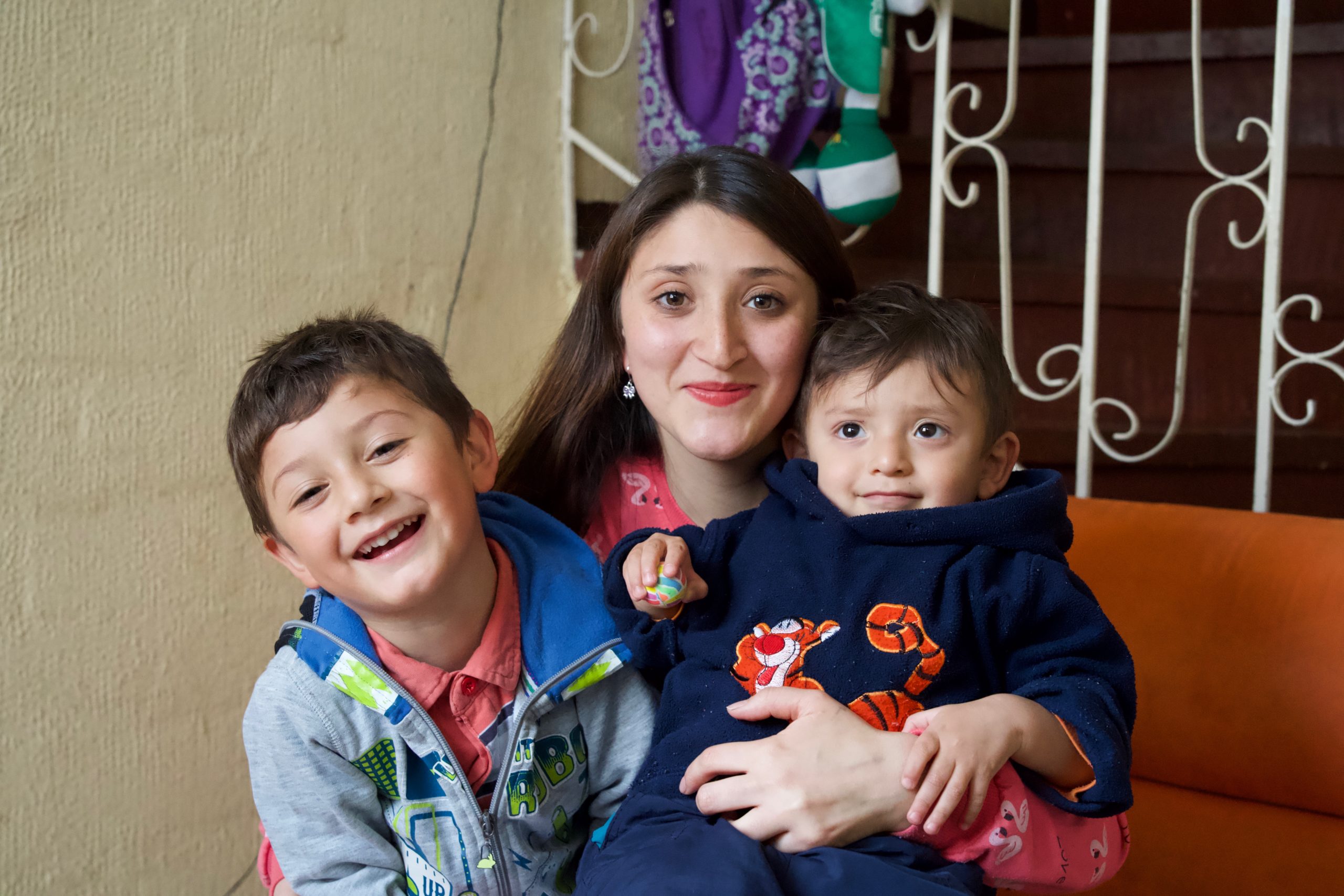10 Steps to Adoption in Non-Traditional Families
In your quest to adopt in non-traditional families, follow these key steps for a successful journey. Begin by understanding adoption requirements and choosing a trusted agency that fits your needs and budget. Attend information sessions, complete training, and prepare your home for a child. Submit your application, undergo checks and interviews, then finalize the adoption. Each step brings you closer to expanding your family. Take the initial steps with confidence, and you’ll soon be on your way to embracing a new member into your loving home.
Key Takeaways
- Research adoption laws for non-traditional families in your state or country.
- Choose an adoption agency experienced with non-traditional families.
- Ensure eligibility and legal requirements align with your family structure.
- Complete necessary training and paperwork specific to non-traditional adoptions.
- Celebrate the finalized adoption with a special event.
Research Adoption Laws and Regulations

To understand the legal framework surrounding adoption in non-traditional families, you should first explore researching adoption laws and regulations specific to your state or country. Adoption eligibility and legal requirements vary widely, so it’s important to familiarize yourself with the specific criteria you must meet to adopt.
Each state or country has its own set of guidelines regarding who can adopt, so make sure you fulfill all necessary prerequisites.
The adoption process involves various legal considerations. Understanding these aspects is vital to guarantee a smooth and successful adoption journey. Legal requirements such as background checks, home studies, and financial disclosures are common procedures in the adoption process.
Familiarizing yourself with these legal considerations will help you navigate the adoption process more confidently.
Choose a Reputable Adoption Agency
When contemplating adoption, it’s essential to choose a reputable agency that aligns with your values and goals. Researching the background of potential agencies can provide insight into their practices and reputation.
Agency Selection Tips
Choosing a reputable adoption agency is essential when maneuvering through the adoption process in non-traditional families. To make the right choice, start by comparing different agencies. Look into their adoption fees and make sure they align with your budget. It’s important to select an agency whose values resonate with yours. Understanding their adoption process is crucial to ensure a smooth journey.
When comparing agencies, consider the services they offer and how they support non-traditional families. Be sure to inquire about any additional costs that may arise during the adoption process. Understanding the agency’s values will help you determine if they’re the right fit for your family. Additionally, familiarize yourself with their adoption process to know what to expect every step of the way.
Research Agency Background
Secure a successful adoption process by thoroughly researching the background of potential adoption agencies, particularly focusing on their reputation and track record in handling adoptions for non-traditional families. Begin by employing effective research methods to gather pertinent data about the agencies under consideration. Analyze this data meticulously to draw insightful conclusions about each agency’s strengths and weaknesses in catering to non-traditional families.
Study findings from past clients and reviews can offer valuable insights into an agency’s performance. Look for patterns in feedback regarding their support, inclusivity, and understanding of diverse family structures. Based on these study findings, make informed agency recommendations to shortlist those best suited for your unique adoption journey.
It’s essential to prioritize agencies with a proven track record of successfully facilitating adoptions for non-traditional families. By delving into the research methods, data analysis, study findings, and agency recommendations, you can secure that you entrust your adoption process to a reputable and supportive organization.
Agency Accreditation Importance
Selecting a reputable adoption agency is an essential step in ensuring a successful and fulfilling adoption process for your non-traditional family. When considering adoption, it’s vital to look for agencies that meet high agency standards and hold relevant accreditations. These accreditations indicate that the agency has undergone a rigorous accreditation process, ensuring they adhere to ethical practices, legal requirements, and provide quality services.
Choosing an accredited adoption agency offers several benefits for your adoption journey. Accredited agencies are held to higher standards, providing you with added assurance that your adoption process will be handled professionally and ethically. These agencies often have experienced staff members who can offer the necessary support and guidance throughout the adoption process.
Additionally, accreditation can also make the adoption process more streamlined, as accredited agencies typically have established procedures and resources in place to facilitate adoptions smoothly.
Attend Adoption Information Sessions

To gain valuable insights and guidance on the adoption process, consider attending adoption information sessions hosted by reputable organizations or agencies. These sessions provide a wealth of adoption support and parenting resources tailored to non-traditional families like yours. By participating, you can learn about the different types of adoptions available, the legal requirements, and the emotional aspects involved in the adoption journey.
Attending these information sessions offers you the opportunity to connect with experienced professionals who can address your concerns and provide you with practical advice. You’ll also have the chance to interact with other prospective adoptive parents, creating a supportive network that can be invaluable throughout the adoption process and beyond.
Make the most of these sessions by asking questions, sharing your thoughts, and actively engaging in the discussions.
Complete Required Adoption Training
As you progress in your adoption journey, ensuring that you complete the required adoption training is a significant step towards preparing for the process of welcoming a new member into your family. Adoption training plays an important role in equipping you with the knowledge and skills necessary to navigate the complexities of the adoption process. It’s essential to understand the unique challenges that may arise in non-traditional families and how to address them effectively.
The significance of adoption training can’t be overstated, as it provides you with valuable insights into the legal, emotional, and practical aspects of adoption. By participating in these training sessions, you can gain a better understanding of the adoption process and feel more confident in your ability to provide a loving and supportive home for a child.
Additionally, adoption training offers the opportunity to connect with other families facing similar challenges, providing a support network that can be invaluable throughout your adoption journey. Embrace the benefits of adoption training as you prepare to welcome a new member into your non-traditional family.
Prepare Your Home for a Child

Prepare to welcome your new addition by childproofing your home with essentials like outlet covers and cabinet locks.
Guarantee safe sleeping arrangements are in place, such as a crib with a firm mattress and no loose bedding.
Create a nurturing environment by decorating with soft colors, adding cozy blankets, and setting up a designated play area.
Childproofing Essentials
Safeguard your home to make sure it’s safe and secure for a child by implementing essential childproofing measures. Begin by installing safety gates at the top and bottom of staircases to prevent falls.
Outlet covers are vital to protect curious little fingers from electrical hazards. Securing furniture anchors will prevent tip-overs, keeping heavy items like dressers or bookshelves from causing accidents. Cabinet locks are indispensable to keep harmful substances or sharp objects out of reach.
Consider getting down to a child’s eye level to identify potential risks. Secure any loose cords, cover sharp corners with cushioning, and remove small objects that could pose a choking hazard. Keep cleaning supplies and medications locked away in cabinets out of reach.
It’s also a good idea to check for any plants that may be toxic and make sure they’re placed in unreachable areas.
Safe Sleeping Arrangements
Prioritize your child’s safety and comfort by creating a secure and cozy sleeping environment in your home. When it comes to co-sleeping concerns, it’s important to take into account the risks and benefits.
While some families choose to share a bed with their child, it’s essential to follow bed sharing safety guidelines to prevent accidents. Make sure that the mattress is firm, with no gaps where the baby could get stuck. Avoid loose bedding, pillows, or soft toys in the sleeping area to reduce the risk of suffocation.
Consider using a separate sleep space within your room if you prefer to keep your child close but maintain a safe sleeping environment. This option can offer the benefits of proximity while reducing the risks associated with bed sharing.
Remember to always place your baby on their back to sleep to reduce the risk of Sudden Infant Death Syndrome (SIDS). Prioritizing your child’s safety and comfort in their sleeping arrangements is important for creating a nurturing environment in your home.
Creating a Nurturing Environment
Prioritizing a nurturing environment in your home involves preparing a safe and welcoming space for your child. Creating a supportive atmosphere is essential for your child’s well-being and development. Start by ensuring that your home is childproofed, with safety measures in place to prevent accidents. Secure heavy furniture, cover electrical outlets, and lock away hazardous substances.
Additionally, creating a warm and inviting space can foster positive relationships and feelings of security. Decorate your child’s room with their favorite colors, toys, and books to make them feel at home.
Incorporating positive reinforcement into your daily interactions can also contribute to a nurturing environment. Encourage good behavior by praising your child’s efforts and achievements. Building supportive relationships with your child through open communication and active listening is vital.
Spend quality time together, engage in activities that you both enjoy, and show unconditional love and acceptance. By creating a nurturing environment filled with supportive relationships and positive reinforcement, you’re setting the foundation for a happy and healthy family dynamic.
Gather Necessary Documents and Paperwork

Make sure you have all the necessary documents and paperwork ready as you navigate the adoption process in non-traditional families. Document organization is key at this stage. Start by creating a designated folder or file to keep all your adoption-related papers in one place. This will make it easier to locate and provide the required information during the verification process.
Having a complete paperwork checklist is essential. Make certain you have copies of your identification, financial statements, background checks, and any other documents requested by the adoption agency.
Familiarize yourself with the adoption timeline, as different stages may require specific paperwork to be submitted within certain deadlines.
Submit Adoption Application
Once you have all your necessary documents organized and ready, the next step is submitting your adoption application. This is an important part of the adoption process as it officially signals your intent to adopt and initiates the evaluation process.
When completing your adoption application, make sure that you follow all instructions carefully and provide accurate information. Common mistakes in the adoption application process include missing deadlines, omitting required documents, or providing incomplete information. To avoid these errors, double-check your application before submission.
Adoption application requirements vary depending on the adoption agency or organization you’re working with. It’s essential to meet all the specified criteria and provide any additional documentation requested promptly.
In addition to the application itself, consider the timeline considerations for the adoption process. Understand that the timeline can vary based on factors such as the type of adoption, the agency’s caseload, and individual circumstances. Stay patient and prepared for any waiting periods that may occur during the application review process.
Undergo Background Checks and Home Visits
To continue the adoption process, you’ll undergo thorough background checks and home visits to guarantee a safe and suitable environment for the child. Home safety is a vital aspect of the adoption process, ensuring that the child will be placed in a nurturing and secure household. Background checks are conducted to verify your suitability as a prospective parent and promote the well-being of the child.
During home visits, adoption agency representatives will assess your living environment to confirm that it meets the necessary safety standards for a child. This includes checking for potential hazards, ensuring there are adequate sleeping arrangements, and confirming that the overall atmosphere is conducive to a child’s well-being.
Background checks are essential to validate your character, lifestyle, and ability to provide a stable and loving home for the child. These checks help to build trust and confidence in your capacity to care for a child in need of a supportive family environment.
Embrace this part of the process as it’s a critical step towards welcoming a child into your home.
Participate in Adoption Interviews
Get ready to participate in adoption interviews by taking the time to prepare yourself emotionally and mentally.
Engage with adoption agencies openly and honestly, sharing your thoughts, hopes, and concerns.

Prepare for Interviews
Prepare yourself to actively engage in adoption interviews by familiarizing yourself with the process and anticipating potential questions. Practice responses to common inquiries such as why you want to adopt, how you’ll handle challenges, and what support systems you have in place. By rehearsing your answers, you can feel more confident and articulate during the interview.
Additionally, it’s vital to dress professionally for adoption interviews. Opt for attire that’s neat, clean, and appropriate for the occasion. Your outfit can make a positive first impression and demonstrate your seriousness about the adoption process.
Remember to approach the interview with honesty and openness. Be prepared to discuss your background, lifestyle, values, and parenting philosophy. Agencies want to verify that they’re placing children in safe and loving homes, so being transparent about who you’re is essential.
Engage With Agencies
When engaging with adoption agencies for interviews, make sure you approach the process with sincerity and transparency. Communication strategies play an important role in these interviews. Be open about your motivations, prepared to discuss your support networks, and willing to address any concerns the agency may have. Remember that honesty is key in building a trusting relationship with the agency.
It’s essential to take legal considerations during these interviews. Familiarize yourself with the adoption laws in your area and be prepared to discuss how you’ll navigate the legal aspects of the adoption process.
Additionally, cultural sensitivity is crucial. Be respectful of different cultural backgrounds and demonstrate your willingness to learn and adapt to meet the needs of a child from a diverse background.
Finalize the Adoption Process
Now that you have come this far in the adoption process, it’s time to focus on finalizing all the necessary legal steps to make your family official. This stage is an important part of the journey towards creating a loving and permanent home for your child. Finalizing the adoption involves completing all the required paperwork, attending court hearings, and possibly meeting with a social worker for post-placement visits.
Once the legal process is complete, you’ll officially become your child’s legal guardian. This is a momentous occasion, marking the culmination of your hard work and dedication to building your family.
After finalizing the adoption, many families choose to have an adoption celebration to commemorate this significant event. This can be a joyous gathering with friends and family, where you celebrate the official addition of your child to your family. It’s a time to reflect on the journey you have taken and look towards the future with your new family member.
Frequently Asked Questions
Can Single Parents Adopt a Child?
Yes, single parents can adopt a child. You have custody rights and will undergo a home study to confirm a safe environment for the child. It’s a rewarding journey that many single parents successfully navigate with love and support.
Are Lgbtq+ Individuals Allowed to Adopt?
Yes, LGBTQ+ individuals are eligible to adopt. Legal considerations vary by location, but many countries and states allow adoption by LGBTQ+ individuals. Your ability to provide a loving home is what truly matters in the adoption process.
How Long Does the Adoption Process Typically Take?
Adoption timelines can vary, influenced by legal requirements and potential challenges. The process typically takes 1-2 years. Emotionally, it may be demanding, but the reward of growing your family makes it worthwhile.
Can You Adopt a Child From Another Country?
Yes, you can adopt a child from another country through international adoptions. It’s a rewarding journey that requires careful consideration of cultural differences. Embrace the opportunity to provide a loving home across borders.
What Financial Assistance Is Available for Adoptions?
When considering adoption, you may find financial assistance through adoption grants and tax credits. These resources can help alleviate the costs associated with adopting a child, making the process more achievable for you.
Conclusion
Now that you have completed these 10 steps to adoption in non-traditional families, you’re well on your way to welcoming a new addition into your home.
Remember to stay patient and positive throughout this process, and lean on your support system for guidance and encouragement.
Your dedication and love will shine through as you navigate the finalization of the adoption process.
You’re ready to provide a loving and stable home for a child in need.
Congratulations on taking this important step!

Hey there! 👋 I’m a proud mom and passionate writer, sharing my parenting journey. 📝 Join me as I navigate the ups and downs of motherhood, offering tips, advice, and a sprinkle of humor along the way. 🌟







